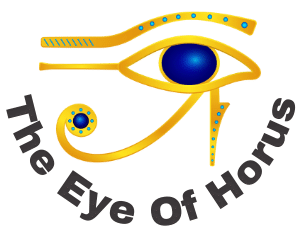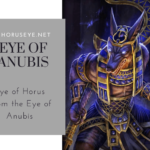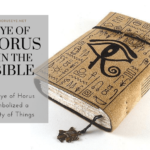In ancient Egyptian mythology, the Wedjat Eye of Horus was a powerful symbol of protection, healing, and restoration. This symbol, also known as the Eye of Ra, was believed to have magical powers to ward off evil spirits and protect the wearer from harm. In this article, we will explore the history, meaning, and significance of the Wedjat Eye of Horus and its use in modern culture.
Introduction
- A brief explanation of the Wedjat Eye of Horus
- Importance of the Symbol in Ancient Egyptian Culture
Origins and Symbolism of the Wedjat Eye
- The mythology surrounding the Eye of Horus
- The symbolism of the Wedjat Eye, including the six parts and their meanings
- Use of the symbol in hieroglyphics and art
The Wedjat Eye in Ancient Egyptian Religion and Belief
- Role of the Wedjat Eye in religious practices and Ceremonies
- Use of the symbol in mummification and the afterlife
- Belief in the protective and healing powers of the Wedjat Eye
Modern Uses of the Wedjat Eye
- The popularity of the Wedjat Eye as a tattoo or jewelry design
- Use of the symbol in contemporary art and fashion
- Continued belief in the protective and healing powers of the Wedjat Eye
Misinterpretations and Misconceptions Surrounding the Wedjat Eye
- Common misunderstandings about the meaning and symbolism of the Wedjat Eye
- Distortion of the symbol in popular culture and media
Wedjat Eye Amulet Meaning
The Wedjat Eye amulet, also known as the Eye of Horus or the Eye of Ra, is an ancient Egyptian symbol of protection and healing. The Wedjat Eye was believed to have magical powers that could ward off evil spirits and protect the wearer from harm. It was also thought to have the ability to heal, particularly when it came to restoring vision.
The Wedjat Eye is made up of six parts, each with its own symbolism and meaning. These parts are represented by fractions, with each fraction representing a different part of the eye:
- 1/2 represents the sense of sight
- 1/4 represents the eyebrow of Horus
- 1/8 represents the right side of the pupil
- 1/16 represents the left side of the pupil
- 1/32 represents the curved tail
- 1/64 represents the teardrop
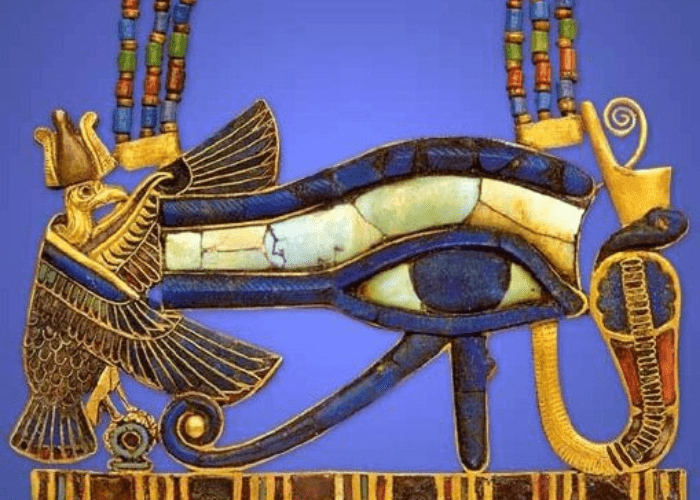
Together, these fractions create a powerful symbol of protection and healing that was highly revered in ancient Egyptian culture. The Wedjat Eye was often used in religious ceremonies and practices and was also commonly used in funerary art and decoration.
Today, the Wedjat Eye remains a popular symbol in Egyptian and occult art, as well as in jewelry design. Many people wear the Wedjat Eye amulet as a talisman of protection and healing, believing in its ancient powers to ward off negative energies and restore balance and health.
Wedjat Eye is an Ancient Egyptian Symbol
In ancient Egyptian culture, symbols played a significant role in their way of life. One of the most famous and widely recognized symbols is the Wedjat Eye, also known as the Eye of Horus. The Wedjat Eye was a symbol of protection, healing, and rejuvenation, and it held immense religious and cultural significance. In this article, we will dive deep into the history and symbolism of the Wedjat Eye.
History of the Wedjat Eye
The Wedjat Eye was named after the goddess Wedjat, who was associated with the sky, fertility, and healing. According to the myth, Wedjat lost her eye in a battle, and it was later restored by the god Thoth. The restored eye became known as the Wedjat Eye and was considered a symbol of protection and healing.
The Wedjat Eye was also associated with the god Horus, who was the son of Osiris and Isis. Horus was known as the god of the sky and was often depicted with the Wedjat Eye. In ancient Egyptian mythology, it was believed that Horus lost his eye in a battle with his uncle Seth. After the eye was restored, it became a symbol of the power and protection of Horus.
Symbolism of the Wedjat Eye
The Wedjat Eye had several layers of symbolism, each representing a different aspect of life. The eye was believed to have magical powers that could protect the wearer from harm, both physical and spiritual. The following are some of the key symbolism associated with the Wedjat Eye:
Protection
The Wedjat Eye was primarily a symbol of protection. It was believed that wearing the symbol or having it in one’s home could protect the individual from harm. The symbol was often used in amulets, jewelry, and other protective items.
Healing
The Wedjat Eye was also associated with healing. The eye was believed to have magical powers that could heal the sick and rejuvenate the body. The symbol was often used in healing rituals and ceremonies.
Rejuvenation
In addition to its healing properties, the Wedjat Eye was also associated with rejuvenation. The eye was believed to have the power to restore youth and vitality to the body.
Spiritual Enlightenment
The Wedjat Eye was also a symbol of spiritual enlightenment. It was believed that the eye could help the wearer see beyond the physical realm and connect with the spiritual world.
Depiction of the Wedjat Eye
The Wedjat Eye was often depicted in ancient Egyptian art and architecture. The eye was usually drawn with a long, curved tail, which symbolized the markings of a falcon. The eye was also drawn with six parts, each representing a different sense: sight, smell, taste, touch, hearing, and thought.
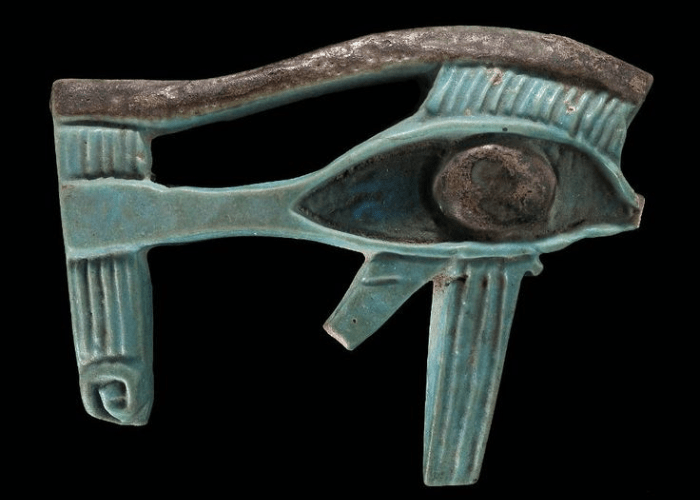
Two Circles Make up the Symbol.
wedjat, or one inside the other. The inner circle stands for reality, while the outside circle is symbolic of infinity and eternity. There may be vertical lines between the two circles, which stand for life and death, in some instances.
What Does the Word Wedjat Mean?
Wedjat was revered in antiquity as the goddess of childbirth, the protector of children, and later, the defender of kings. Wedjat was generally seen as a ferocious defender, in contrast to her sister Nekhebet, who was frequently seen as the parental defender.
Wedjat Eye of Horus Meaning
The snake goddess of Upper Egypt, Wedjat (also spelled Wadjyt, Wedjat, or Uadjet), guarded the pharaohs. She was viewed as a powerful magical force, a representation of the pharaoh’s authority and the vitality that kept him alive. She was linked to power in the religion of the ancient Egyptians. She goes by the names Wedjat and Wedjat.
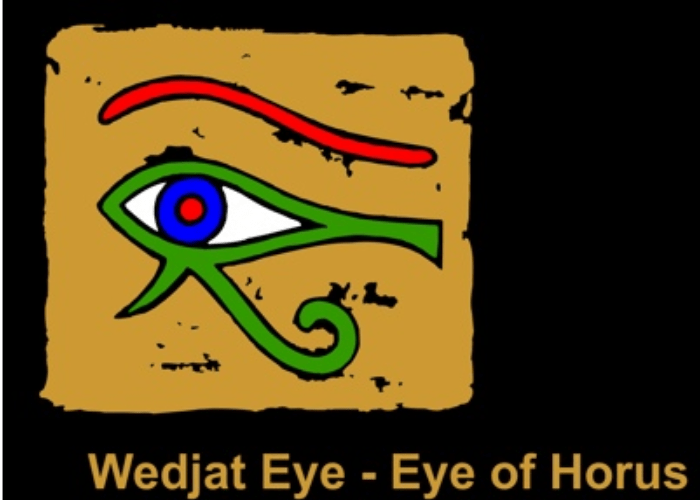
Wedjat, a snake or a lady with a serpent’s head, was the patroness of rulers. She was thought to represent Horus’s protecting aspect, able to guarantee his safety and give him defense against bad powers. She became known as Lady of Heaven in this capacity (also known as Lady of Heavens).
In artwork, Wedjat was shown as a cobra, a lady donning an Egyptian crown, either from Upper Egypt or from Lower Egypt (the crowns were usually worn by goddesses). Atop several items, including bowls and jars, she was also shown in human form grasping or standing on snakes.
The Eyes of Ra and Horus
The right eye is referred to as the “Eye of Ra,” while the left eye is referred to as the “Eye of Horus,” symbolizing the moon (although it was also associated with Thoth). Frequently, though, it’s not apparent whether the left or right eye is being mentioned.
What Skills Does Wedjat Possess?
Strong and in charge of both the other gods and the Egyptian royal family, Wedjat was a powerful deity. She was often represented as a serpent goddess due to her force, might, and inclination to strike the adversary. Ancient Egyptian mythology and religion contain a potent emblem known as the Eye of Horus or Wedjat.
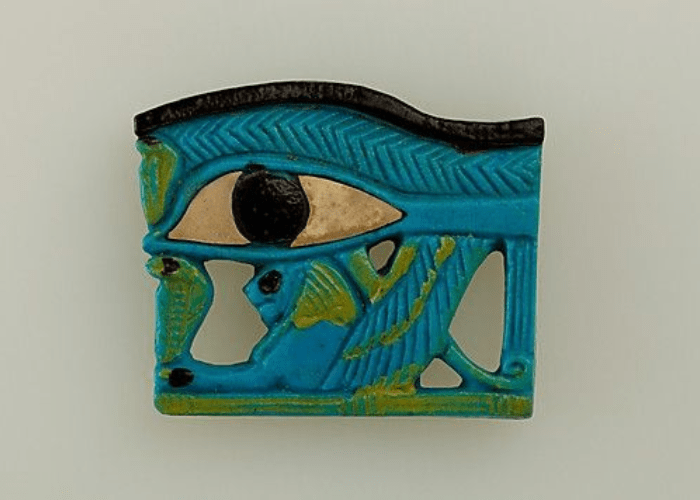
The Eye of Horus is frequently shown as a solar eye that stands in for Ra, the sun deity. Additionally, it was said to shield the possessor from evil and illness. The design appeared on snake-shaped scepters, rings, and amulets. An amulet with the sign was thought to fend off bad spirits and protect the wearer’s health.
Which Egyptian Deity Was Represented by a Serpent?
Ancient Egyptian chaos demon Apophis, sometimes spelled Apep, Apepi, or Derek had serpentine characteristics. He represented all that went against the established order of the cosmos and was the opponent of the sun god Re. Apophis was a snake that symbolized evil and threatened the underworld, whereas many serpents stood for kingship and divinity.
How Ancient Egyptian Beliefs Are Related to the Wedjat Eye of Horus
In ancient Egyptian culture, the Wedjat eye served as a representation of health and well-being. It was said to offer wearers the power to see what is concealed and to protect them from bad energies. Ancient Egyptians believed that the Wedjat eye of Horus had healing properties and shielded its bearer from bad influences.
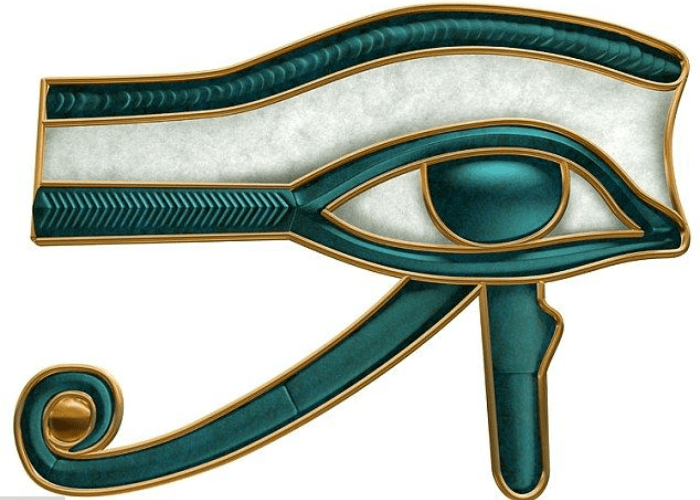
Throughout Egypt, the sign has been discovered in a variety of forms, dimensions, materials, hues, and settings. The Wedjat eye of Horus, also known as “the Eye of Ra,” was believed to be a defense against evil spirits and nightmares. The Wedjat eye of Horus, according to ancient Egyptian belief, would shield people from any unfavorable dreams or ideas that could arise at night.
Jewelry and artwork frequently include the Horus eye. The most well-known representation of this sign is on Tutankhamun’s tomb in Egypt, where he is seen wearing an amulet around his neck that has a picture of an eye inside of it.
Why on Earth Would You Utilize a Wedjat Eye of Horus Today?
Ancient Egyptians used the wedjat eye of Horus as a sign of safety, regal authority, and good health. The eye is sometimes shown as having a stylized brow and eyeliner and being blue or green in color. The wedjat eye of Horus is still employed as a protective emblem today and is seen on a variety of objects, including jewelry and amulets.
Symbols of Wedjat: Papyrus
Symbols of the Wedjat Ancient Egyptian symbols and hieroglyphs found on papyrus were employed to guard the pharaohs and their family. The papyrus was found by French archaeologists in the 19th century and is now on exhibit at the Louvre Museum in Paris.
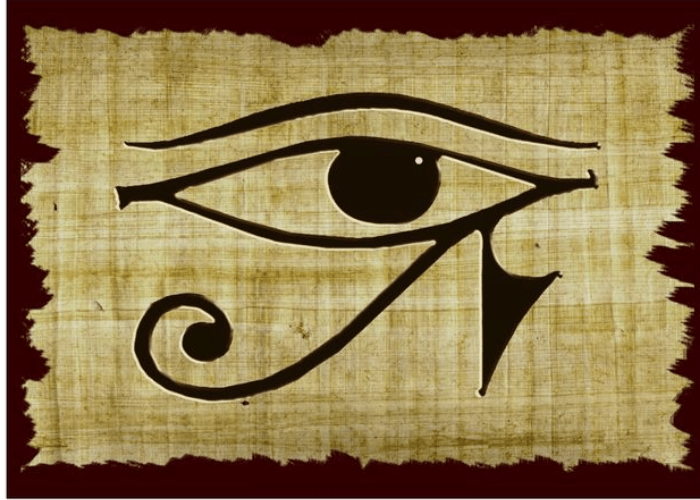
The hieroglyphs and symbols on the papyrus were utilized by the Egyptians to guard the Pharaohs. The Eye of Horus, which was intended to ward off bad spirits, is the most well-known of them. The Ankh, which stands for life, the djed, which stands for stability, and the Was scepter, which stands for authority are among the other symbols on the papyrus.
Symbols of the Wedjat Anyone interested in the history and culture of ancient Egypt should consult papyrus. The Wedjat’s eye is a potent sign with a rich history and symbolic meaning that may bring you luck, power, or protection.
Symbols of Wedjat: Shrew
Symbols of the Wedjat Shrew is a blog that focuses on delving into the various meanings and symbols connected to the Wedjat, an ancient Egyptian goddess who was frequently shown as a cobra or lioness. The Wedjat has gained popularity in recent years, especially among women, as a sign of power and defense.
The Protection, Royal Power, and Good Health Symbols of the Wedjat
One of the most well-known and significant emblems of ancient Egyptian civilization is the Wedjat’s eye. People who had this supernatural eye were said to benefit from protection, royal authority, and excellent health. The Wedjat was also referred to as the “Eye of Ra,” the moniker coming from the mighty solar deity of the same name.
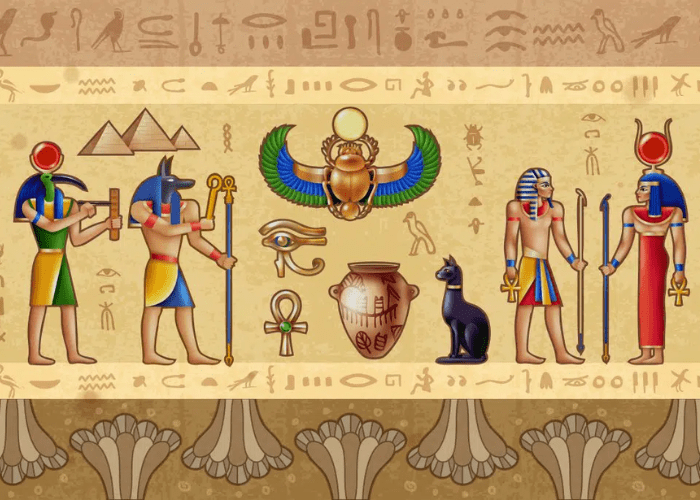
The Wedjat’s eye was thought to have protective powers against injury and the ability to fend off the bad spirits of the ancient Egyptians. It frequently appeared on the crowns and headdresses of Pharaohs and other members of the royal family as a sign of their authority. In amulets and talismans intended to advance welfare, the Wedjat was frequently utilized as a sign of good health.
